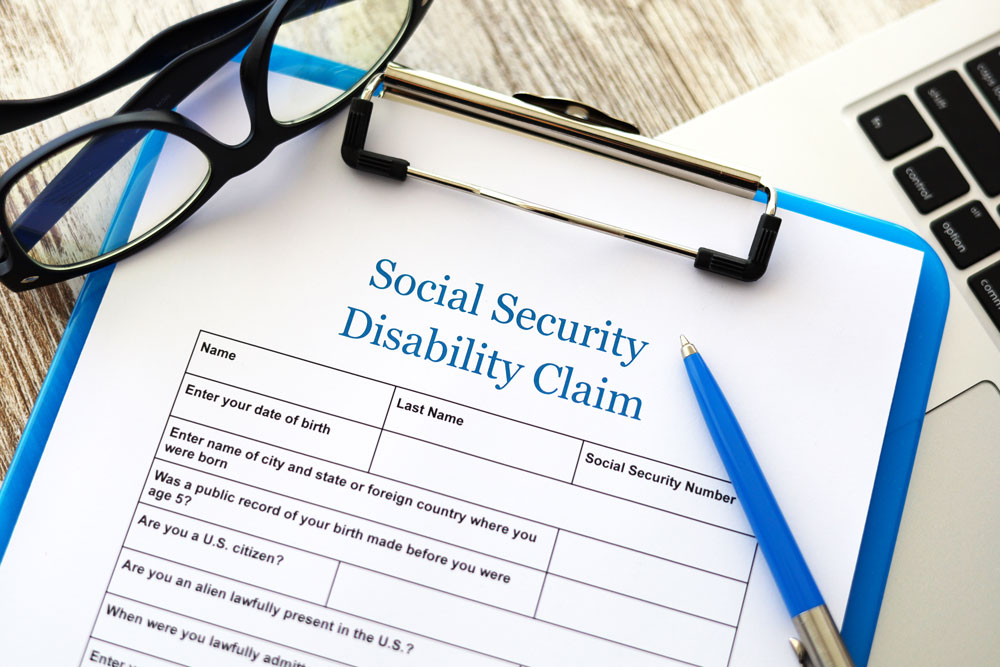Learn how to apply for social security disability benefits if you are suffering from desmoid tumors.
(The following information was compiled by a DTRF volunteer. Please check with the Social Security Administration (SSA) to make sure you have the most accurate and current information.)

If you have been diagnosed with a desmoid tumor, the last thing on your mind should be worrying about finances. Fortunately, there could be help available. The Social Security Administration (SSA) offers disability benefits for people who are ill and no longer able to work. There are two disability programs: Supplemental Security Income (SSI) and Social Security Disability Insurance (SSDI), while SSI is based on need and SSDI is based on employment contributions by yourself and your employer. If your desmoid tumor treatments or complications will keep you from working for 12 months or more, you could be eligible.
Medically Qualifying with Desmoid Tumors
Social security has identified several conditions including cancer that if you have particular diagnoses and undergo certain treatments you receive a presumption of disability. These conditions are listed here. Desmoid tumors are not listed. However, functional capacity can be impacted by desmoid tumors, treatment, medication side effects, or cognitive and mental health issues.
A successful application includes:
- The limitations in your capacity to work caused by your medical conditions and the impact of medical treatments. For example, there may be long term cognitive, physical, or mental impacts from surgery, radiotherapy or chemotherapy including pain and limitations in movement. You may also have chronic persistent diarrhea or urinary challenges. Even if you are not undergoing active treatment, desmoid tumors may cause these issues.
- Any mental health issues that can also impact your work function. These may include depression, anxiety, PTSD (related to tumor recurrence) or other issues.
- Cognitive issues affecting your focus, concentration, and memory can also impact your work function.
- Information about how your medical condition and treatment program have impacted your physical and social function.
- Information about how your physical, medical, and mental limitations impact your ability to perform a simple entry level job.
- Information about how to care for these conditions will impact your performance and ability to attend work.
Qualifying Through a Medical Vocational Allowance
A Medical Vocational Allowance is where the SSA approves a disability applicant even when he or she does not meet any Blue Book listing. This is done when your illness keeps you from performing any work. Age (over 50) and education (less than high school graduate) play a role in your review. (Those who are younger and have a higher education level are more able to be retrained.)
Examples:
Jodi is a 59-year-old woman who has been diagnosed with desmoid tumors in her abdomen. She will be going through treatments for the next 24 months. She never completed high school and has only ever worked in retail, which requires her to stand on her feet all day. Because her chemotherapy and surgery limits her to primarily bed rest, she may qualify for disability benefits through a Medical Vocational Allowance.
Tina, on the other hand, is a 30-year-old marketer who has been diagnosed with desmoid tumors in her abdomen. She will also receive two years of radiation and other therapies. But Tina works primarily at a desk or from home, and she has a Master’s degree. The SSA does not approve her for disability benefits because it believes she could still attain gainful employment.
What You Need to Apply For a Medical Vocational Allowance
An important step in your case review is SSA determining your Residual Functional Capacity. The Residual Functional Capacity (RFC) assessment is used to determine your capacity to perform physical tasks in spite of your medical condition. You can download the RFC to see the questions which may be asked of your physician.
The questionnaire covers how much physical movement or labor you can do: how much you can lift, how long you can stand or stay seated, how far you can walk, etc.
How to Apply for Disability Benefits
If you are ready to apply for benefits, you should apply entirely online on the SSA’s website if you can. You may also schedule an appointment to apply in-person at one of the SSA’s 1300 offices across the country. You can do so by calling the SSA toll-free at 1-800-772-1213.
The most important component of applying will be listing all of the doctors who have treated you, as well as any hospitals where you’ve been treated. When you meet with your physicians it is important to have frank discussions regarding your physical and mental limitations.
The approval rate for initial applications is roughly 38%. It takes roughly 7 months for the initial review. If you are denied during the initial application, don’t lose hope, most are initially rejected. The next stage is reconsideration (first appeal). For this stage roughly 15% of those who applied are approved. This takes on average about 1 year and 1 month to complete. The next stage is a hearing with an administrative law judge. At this stage the national average of approvals is 51%. This takes about 2 years and four months to complete.
If you are approved you will receive a retroactive disability payment based on your disability date indicated in your application. However, the maximum period for retroactive benefits is 12 months.